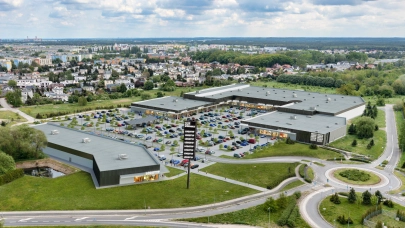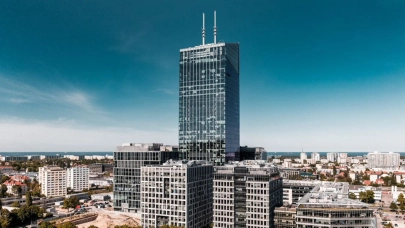
Retail centres face pressure from different angles and most of them have started refurbishment programs including energy efficiency investments. Is that enough or do they need to invest more to keep up? Property Forum asked Judit Balatoni, Secretary General of the Hungarian Council of Shopping Centres (HCSC) about the ways operators meet current challenges.
The retail sector continues to face several significant challenges. How effective are the shopping centres in finding the necessary answers to those challenges in Hungary?
The impact of trade on the economy and employment is significant both in the EU and in Hungary. The European Union has 26 million people employed in trade and it generates 8% of the GDP. In Hungary, there are 550.000 people employed in the commercial industry and its contribution to the GDP is 11-12%. The commercial sector is the largest employer in Hungary and also the highest VAT and taxpayer. Since 1998, the Hungarian Council of Shopping Centers represents 62 shopping centres and 146 hypermarkets operating on more than 2 million sqm.
It is interesting to analyse challenges from several aspects. Inflation, a drastic rise in energy prices, negative effects of the exchange rates, and a decrease in retail turnover are among the most typical economic effects. Changing consumer habits, the rapid development of digitalisation, and the rise of e-commerce belong to the other group. Market players must respond to these impacts. Shopping centre operators have reacted quickly to the energy crisis, partly by making energy efficiency investments and partly with changes that reduce energy consumption. There are some shopping centres where the tenants’ own energy consumption and the common costs paid for the common areas are a higher monthly fee than the rent fee.
According to a recent energy efficiency survey, nearly 70% of HCSC’s member companies have made energy upgrades and improvements over the last 5 years. In several centres, these investments represent energy savings of over 30%. Almost all members are planning further energy efficiency investments in the following 1-3 years.
Responding to changing consumer habits, shopping malls are offering visitors a more experiential and diverse range of services and goods. The operational structure of shopping centres allows them to deal effectively with these challenges. Most operators have an internationally owned background, relevant experience and professional staff. Effective marketing, the development of digitalization and a better understanding of visitors are among the essential responses to these challenges.

Judit Balatoni
Secretary General
Hungarian Council of Shopping Centres
How successful are the owners or property managers in improving tenant mix and adjusting to the changing shopping habits?
Shopping centres offer increasingly sophisticated and specialized services and programs to their tenants and visitors. In creating the tenant mix, they also strive to shape a store offering that is in line with the latest trends. Based on feedback from the centres, several international brands are expanding. In the last decade, almost all centres have been constantly transformed and new functions have been introduced.
Nowadays, due to the lack of new developments and the age of the buildings, the industry is characterized by renovations and modernization. Many centres in Budapest and the countryside have already been refurbished or are in progress. One of the most important tasks is repositioning the tenant mix, renewing the tenant offer according to opportunities and customer needs and modernising the shops. In recent years, renovation of the food court has been significant, both in terms of furniture and in improving the quality of the catering units' offer.
Do you expect more fashion brand to minimise their physical outlets and spend a lot more on their online performance?
The demand for floor area is decreasing in some segments, and floor space optimization is taking place depending on, for example, what the consumers need in some locations, but the total floor area does not change, only the composition according to the profile. Based on the reports of the retail stores, they realize a higher turnover on a smaller floor area nowadays, this is especially typical for the fashion segment. A great deal of flexibility and creativity is required from shopping centre operators in this regard.
There are already several ideas for utilizing the vacant/transforming spaces, for example, tenants having online services rent areas together, even seasonally. The operators must create the conditions and services for the current customer habits and needs. In some places, expansion plans are also among the long-term developments. Although online sales are increasing year on year, it is only complementary to physical sales. Many stores also operate as pick-up points, the hybrid online-offline model is working.
The footfalls after COVID have returned to the previous period and trade turnover has increased in several locations. Shopping centres are still very popular, but the number of visitors is either stagnating or increasing slightly.
The food and beverage subsector is more popular than ever before. Do you expect operators to separate so-called mass food services from premium ones like in some centres we witness already?
The food court/fast food and seated catering were already physically separated. The clear direction is the renewal of food courts and the integration of quality restaurants and cafés with sophisticated food into shopping centres. Good examples of these are in Budapest: the new food court in Árkád Budapest (Foodloft), the expansion and renovation of the Allee food court, the expansion of GoBuda’s quality gastronomic stores and restaurants, the reopening of the food court in Campona, and the renewed food court of Auchan Korzó in Soroksár.
Do you agree that some centres will change hands because of the current crisis? Or do you see no such centres on the horizon and all properties can survive?
The crisis doesn’t justify by itself an increase in ownership changes. There have been transactions both during the boom and recession periods. There are currently not many changes in ownership structures due to the unfavourable economic situation, but transactions are still taking place. Nowadays, the supply is greater than the demand. We do not see too many new developers or operators. The owners or developers of shopping centres do not act in the retail segment exclusively, they are also present in the residential, office and hotel markets. From a sectoral point of view, the optimal amount of ownership changes can have a positive effect, for example, in raising the level of service.
Demand for retail parks is on the rise among investors. Do you expect more transactions in this segment in secondary cities in Hungary?
Based on previous experience, retail parks proved to be more crisis-resistant than classic mall-type shopping centres over the Covid period. In small towns retail parks are typically located on the outskirts of the town, these places satisfy the needs of customers in the catchment area.
Everybody speaks about the importance of ESG compliance. How about this in retail? What are the concrete steps made by shopping centre operators?
ESG compliance is an increasingly integrated and important part of the management of shopping centres. More and more centres have ESG reports and action plans. When it comes to refurbishing or modernising properties, everyone takes ESG aspects into account. A positive effect of the crisis is that ESG creates new opportunities and accelerates the integration of environmental protection solutions in operations and encourages the market participants to apply the ESG considerations more quickly.



